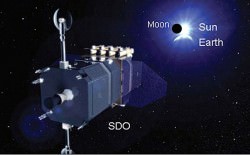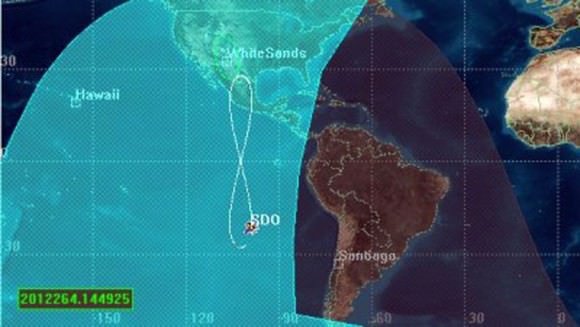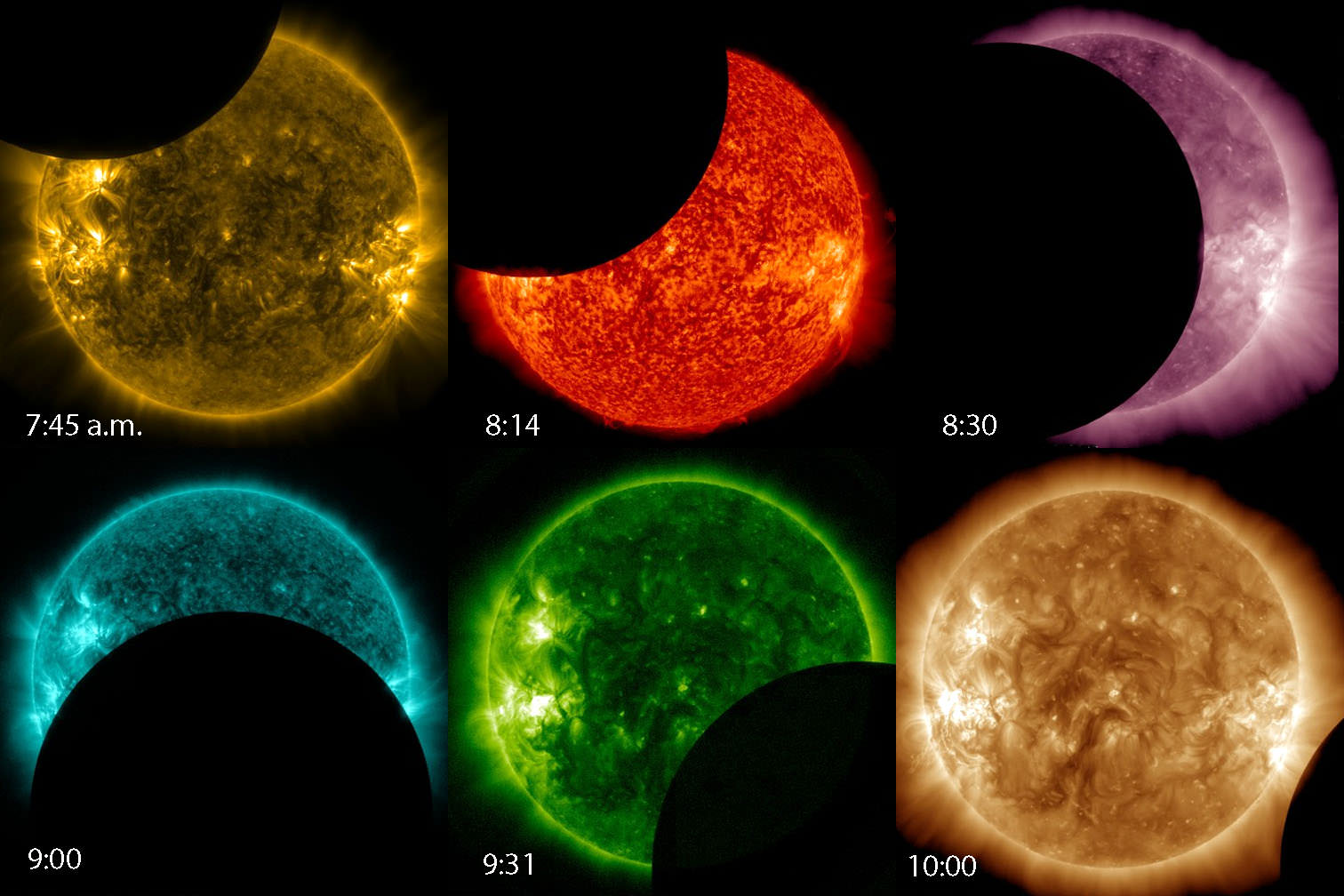Call it the eclipse nobody saw. NASA’s Solar Dynamics Observatory (SDO) got its own private solar eclipse showing from its geosynchronous orbital perch today. Twice a year during new phase, the moon glides in front of the sun from the observatory’s perspective. Although we can’t be there in person to see it, the remote view isn’t too shabby. The events are called lunar transits rather than eclipses since they’re seen from outer space. Transits typically last about a half hour, but at 2.5 hours, today’s was one of the longest ever recorded. The next one occurs on July 26, 2014.
Today’s lunar transit of the sun followed by a strong solar flare
When an eclipse ends, the fun is usually over, but not this time. Just as the moon slid off the sun’s fiery disk, a strong M6.6 solar flare exploded from within a new, very active sunspot group rounding the eastern limb and blasted a CME (coronal mass ejection) into space. What a show!

SDO circles Earth in a geosynchronous orbit about 22,000 miles high and photographs the sun continuously day and night from a vantage point high above Mexico and the Pacific Ocean. About 1.5 terabytes of solar data or the equivalent of half a million songs from iTunes are downloaded to antennas in White Sands, New Mexico every day.
For comparison, the space station, which orbits much closer to Earth, would make a poor solar observatory, since Earth blocks the sun for half of every 90 minute orbit.
When you look at the still pictures and video, notice how distinct the edge of the moon appears. With virtually no atmosphere, the moon takes a “sharp” bite out of the sun.

Read more: http://www.universetoday.com/#ixzz2ruidvZJ5
SDO amazes with its spectacular pictures of the sun taken in 10 different wavelengths of light every 10 seconds; additional instruments study vibrations on the sun’s surface, magnetic fields and how much UV radiation the sun pours into space.
Compared to all the hard science, the twice a year transits are a sweet side benefit much like the cherries topping a sundae.
You can make your own movie of today’s partial eclipse by visiting the SDO website and following these easy steps:
* Click on the Data tab and select AIA/HMI Browse Data
* Click on the Enter Start Date window, select a start date and time and click Done
* Click on Enter End Date and click Done
* Under Telescopes, pick the color (wavelength) sun you want
* Select View in the display box
* Click Submit at the bottom and watch a video of your selected pictures

